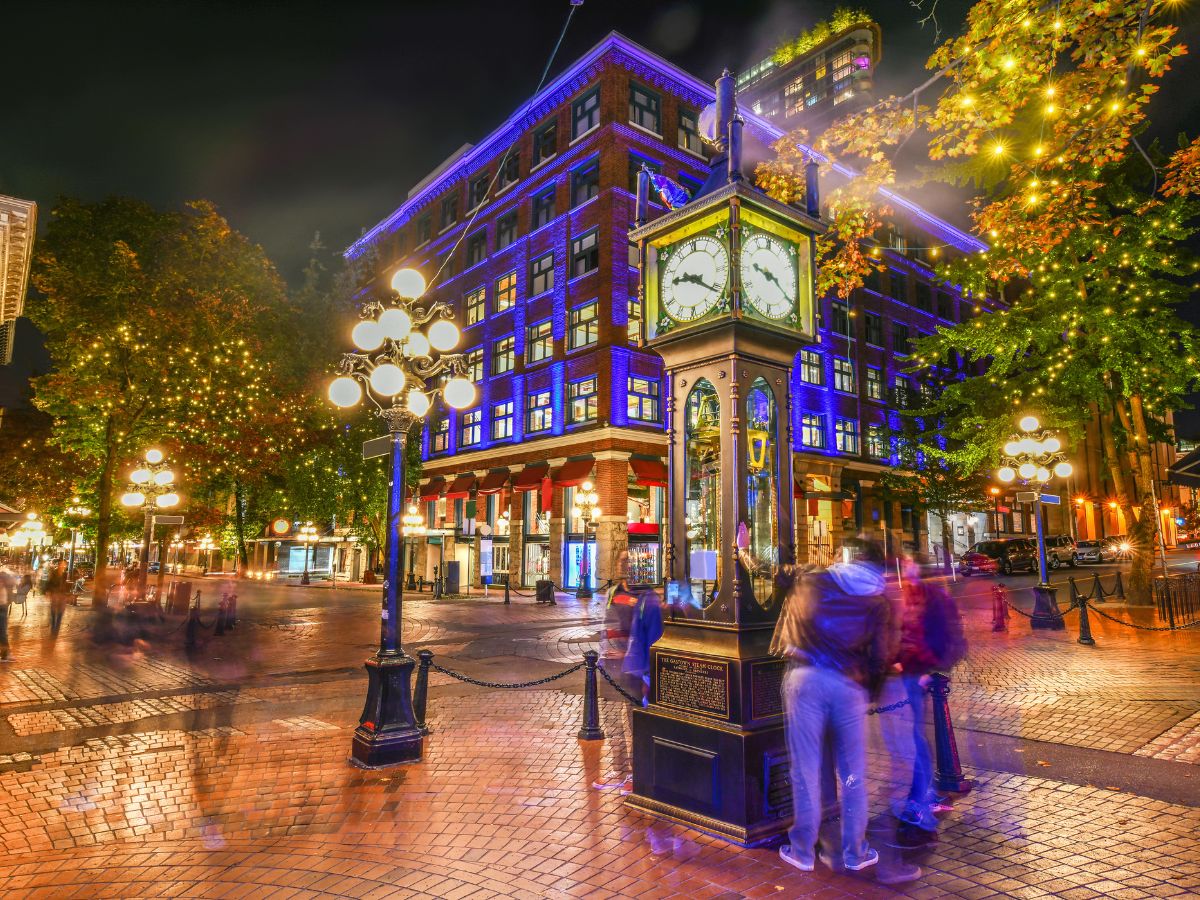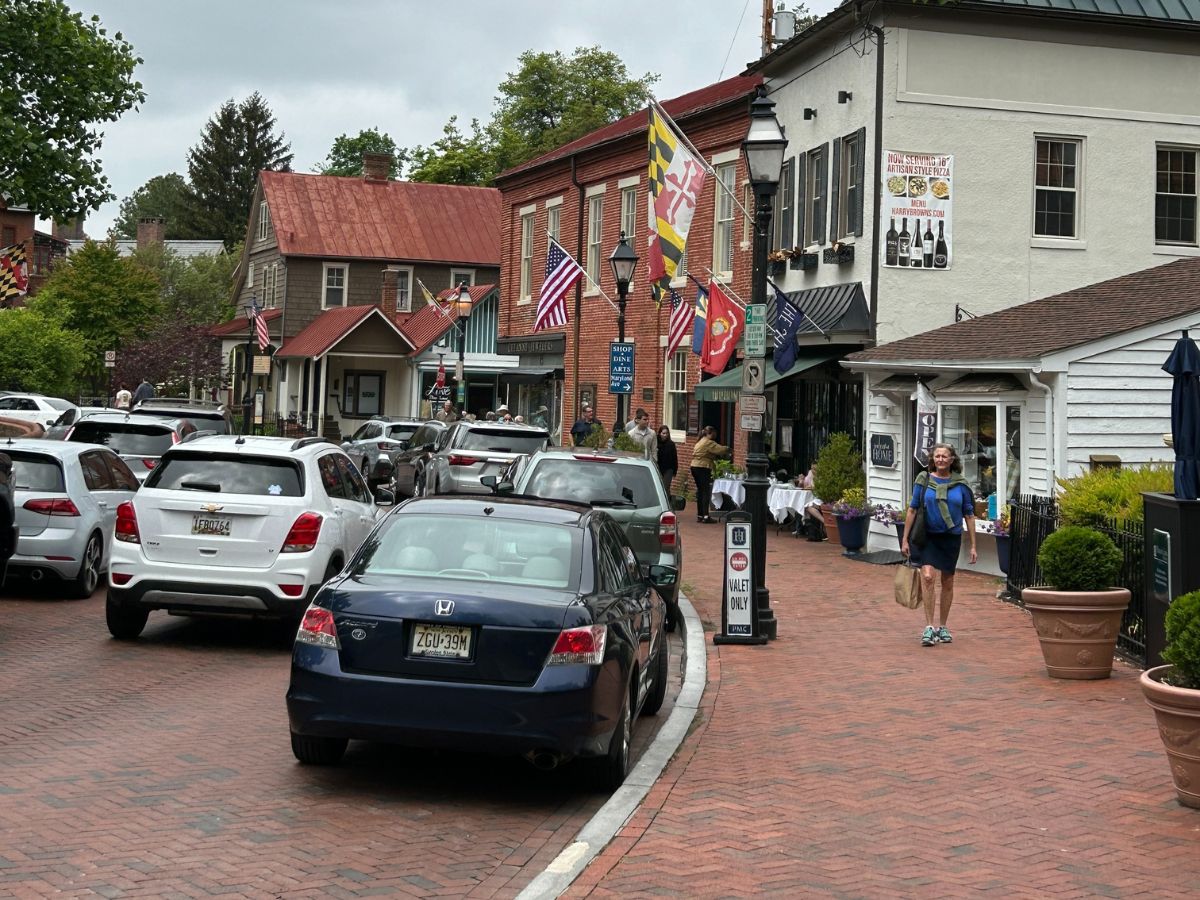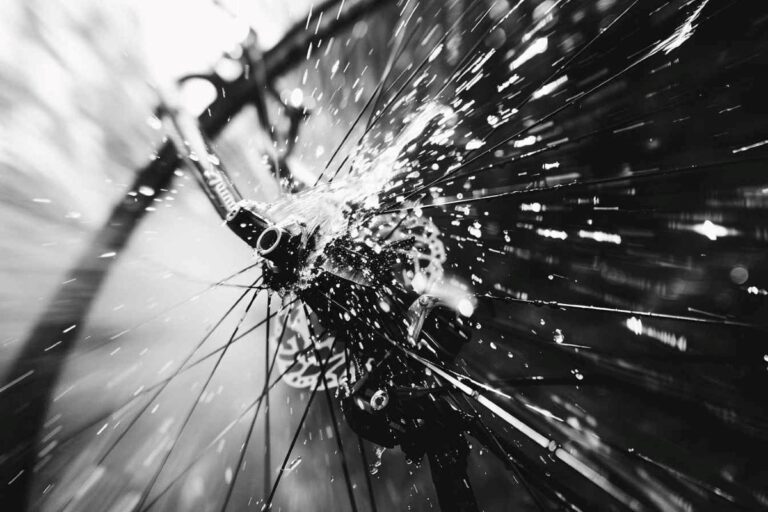Finally, Gastown might permanently become the pedestrian-friendly district it should have become long ago!

Back in 2012 the Vancouver Sun published a story setting out that Gastown’s iconic cobblestone streets may be replaced.
12 years later, I’m happy to see that Vancouver’s oldest neighborhood still has cobblestone streets despite large swaths of it in disrepair and “patched” with asphalt.
Interestingly, the cobblestones are not hundreds of years old. They were installed in the 1970s (I did not know this until I started researching this article and was more curious about the history of Gastown).
Anyway, Gastown is undergoing a significant preservation project followed by a pilot pedestrian project. Overdue IMO.
IMO, Gastown’s cobblestone streets are well worth preserving properly.
Last year I visited Annapolis, Maryland, which is one of the oldest towns in America. Its many cobblestone and red brick streets are in excellent condition. While a tourist trap, it’s a fun place to visit, in part, due to the historic charm it oozes thanks to cobblestone streets.

I just hope the City of Vancouver and other heritage governing stakeholders continue to recognize the value in investing in preserving Gastown’s cobblestone streets similar to Annapolis and the State of Maryland.
Is the City of Vancouver botching the job?
In 2013, Gobal News reported that at the time the City’s method for repairing the crumbling cobblestones was to use asphalt. Not a good approach given it’s totally unnecessary and will over time ruin the historic charm. So many other historic towns throughout North America and Europe take much greater care in preserving its brick and cobblestone streets.
As of 2022, it seems the botching for preserving the streets continues per The Daily Hive. That said, it also sounds like the Business Improvement Association is working with the City to preserve Gastown better.
However, the good news is the City saw the light and is starting a restoration project in Gastown that includes repairing its streets properly. This includes removing the asphalt patches and replacing them with cobblestones.
Historic vibe vs “vehicle and cost convenience”
Obviously, preserving cobblestone streets is the least practical thing to do when considering vehicle traffic and cost. That’s why most streets are asphalt or concrete.
However, when there’s a small portion of a city or town with beautiful historic buildings that locals and visitors appreciate, it’s a small ask and cost to invest properly into preserving the streets as well. It really adds that charm. IMO, Annapolis would not be what it is if it paved the entire place in asphalt.
Turn Gastown into a pedestrian-only district? Wait, it’s actually happening this Summer
Starting next week, parts of Water Street (Maple City Square) are being shut down to vehicle traffic for repairs followed by a pilot pedestrianize project. Finally!
Read the City’s plan and timeline here.
I get commuters are going to get the short end of the stick here. I used to drive to Burrard via Water Street in Gastown. However, IMO, the ambiance of a pedestrian district would make the area so much better. It’s like Whistler Village. Imagine if vehicles were permitted in the pedestrian zone? It wouldn’t be nearly as nice to visit as it is.
Besides, I can’t say bouncing along Water Street in my car was ever the most pleasant drive getting into downtown. Surely, there’s a better way. It was slow-going and clumsy at best with pedestrians crossing frequently, vehicles parked all over the place… it’s long not been a good road for vehicles.
I’m looking forward to strolling Gastown when it’s vehicle free.
As an aside, if you’re wondering about the difference between brick and cobblestone streets, here you go:
This is the kind of questions that come to me when writing. I can’t help myself but to dig in and find out.
Here’s a breakdown of the key differences:
Material
- Brick Streets: Made from bricks, which are usually rectangular units manufactured from clay or concrete. Bricks have a uniform shape and size, providing a relatively smooth and consistent surface.
- Cobblestone Streets: Composed of cobblestones, which are small, natural stones with a somewhat rounded shape. Cobblestones were traditionally gathered from riverbeds and came in various sizes and colors, leading to a more irregular surface.
Appearance
- Brick: Offers a uniform, neat appearance with straight edges and consistent coloration. Bricks can be laid in various patterns, such as herringbone, basket weave, or running bond, allowing for design flexibility.
- Cobblestone: Delivers a rustic, old-world look with irregular shapes and varied colors. The natural variation in stone size and color creates a unique, visually textured surface.
Installation
- Brick Streets: Installation involves laying bricks on a prepared base of compacted gravel and sand. The uniformity of bricks allows for relatively easy and quick installation in a variety of patterns.
- Cobblestone Streets: Cobblestones require a labor-intensive installation process, as each stone must be set individually by hand to ensure stability and proper drainage. The irregular shapes of the stones make the process more complex and time-consuming.
Durability and Maintenance
- Brick: Modern bricks, especially those made for paving, are durable and can withstand heavy loads. However, they may crack or chip over time and can become slippery when wet. Maintenance might involve replacing individual bricks that have become damaged.
- Cobblestone: Extremely durable and capable of lasting centuries with minimal maintenance. Cobblestones are less likely to crack than bricks but may require releveling to correct unevenness caused by settling or heavy traffic.
Performance and Use
- Brick: Provides a relatively smooth riding surface suitable for all types of traffic, including bicycles and wheelchairs, when properly installed and maintained. However, they can become slick in wet conditions.
- Cobblestone: Offers a high level of traction due to its textured surface, even when wet, making it safer in rainy conditions. However, the uneven surface can be challenging for bicycles, wheelchairs, and high heels.
Aren’t you glad you now know the difference?








According to this link Gastown streets are not cobblestone. https://globalnews.ca/news/992535/gastowns-famous-cobblestone-and-tile-streets-literally-falling-apart/